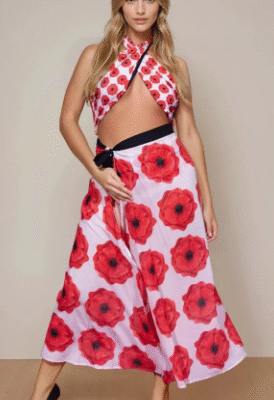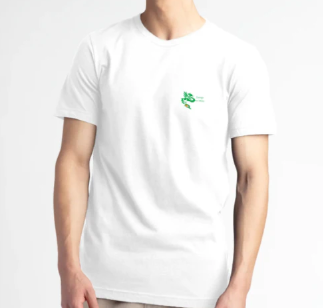The headboard is often considered the centerpiece of a bedroom, anchoring the bed and influencing the overall aesthetic of the space. It’s not merely a functional piece; it’s also a design statement that reflects personal taste and lifestyle. Among the most popular options available today, fabric headboards and wooden headboards stand out for their distinctive looks and unique characteristics. Both have loyal followings and offer a range of benefits. However, choosing between them can be a challenge, as each suits different design preferences, needs, and bedroom setups.
If you’re torn between the timeless appeal of wood and the soft elegance of fabric, this detailed comparison will guide you through the pros, cons, and factors to consider when selecting the ideal headboard for your bedroom.
The Appeal of Fabric Headboards
Fabric headboards have gained popularity in recent years, particularly among those seeking a plush, cozy atmosphere in their bedrooms. Their soft surfaces, versatility in design, and wide variety of fabric options make them a favorite for many homeowners.
1. Comfort and Functionality
One of the biggest advantages of fabric headboards is their comfort. They are usually padded, making them ideal for those who like to sit up in bed to read, watch TV, or work on a laptop. The cushioned surface provides support and feels gentle against the back, creating a more relaxed environment.
2. Aesthetic Versatility
Fabric headboards are available in a broad spectrum of colors, textures, and patterns. Whether you prefer the smooth elegance of velvet, the casual look of linen, or the luxurious feel of leatherette, there’s a fabric to match every taste.
From minimalist and neutral designs to bold, statement-making styles, fabric headboards offer endless customization possibilities. They can easily complement different types of bedroom decor, whether it’s modern, bohemian, traditional, or transitional.
3. Soft, Cozy Ambiance
Fabric headboards naturally create a softer, warmer ambiance in the bedroom. Their upholstered surfaces add layers of texture, making the room feel inviting and serene. This makes them particularly suitable for those who prioritize comfort and relaxation in their personal spaces.
4. Variety of Designs
From sleek, button-tufted styles to wingback designs and channel-tufted options, fabric headboards offer numerous design variations. Whether you’re looking for a high, dramatic piece or a subtle, low-profile design, fabric headboards can suit many room layouts and sizes.
5. Downsides to Consider
While fabric headboards offer many benefits, they do have some drawbacks:
- Maintenance: Fabric can attract dust, hair, and stains more easily than wood. Regular vacuuming and occasional spot-cleaning are necessary to maintain their appearance.
- Durability: Depending on the fabric and usage, upholstered headboards may show signs of wear over time, especially in households with pets or young children.
- Susceptibility to Fading: Certain fabrics may fade if exposed to direct sunlight over prolonged periods.
The Timeless Charm of Wooden Headboards
Wooden headboards have been a staple in bedrooms for centuries. They are prized for their classic beauty, durability, and the natural warmth they bring to interiors.
1. Durability and Longevity
One of the strongest selling points of wooden headboards is their robustness. High-quality hardwood headboards can last for decades with minimal maintenance. They are resistant to wear and tear and don’t easily succumb to dents or scratches under normal usage.
2. Natural Beauty
Wooden headboards exude a timeless charm that can elevate the aesthetic of a bedroom. The rich grains, natural variations, and warm tones of wood make each piece unique. Whether finished in deep mahogany, light oak, or sleek walnut, wooden headboards bring a sense of authenticity and craftsmanship to the space.
3. Easy Maintenance
Unlike fabric, wooden headboards are easy to clean and maintain. A simple wipe-down with a damp cloth can remove dust and dirt. Occasional polishing or treating with wood oil helps maintain their luster.
4. Versatility in Design Styles
Wooden headboards are highly adaptable and can suit a wide range of design themes:
- Rustic or Farmhouse: Rough-hewn or distressed wood creates a cozy, rustic vibe.
- Modern: Sleek, minimalist wooden designs pair well with contemporary interiors.
- Traditional: Carved wood designs add a touch of elegance to classic bedroom decor.
5. Drawbacks to Consider
Despite their many positives, wooden headboards also have limitations:
- Hard Surface: Wooden headboards are not as comfortable to lean against as padded options, which may be a consideration for those who spend time sitting up in bed.
- Weight: Solid wood headboards can be quite heavy, making them more difficult to move or reposition.
- Cost: High-quality wooden headboards, especially those made from premium hardwoods, can be more expensive than some fabric options.
Factors to Consider When Choosing Between Fabric and Wooden Headboards
Making the right choice requires evaluating your personal needs, bedroom design, and lifestyle. Here are some important factors to help guide your decision:
1. Bedroom Style and Theme
Consider the existing decor of your bedroom. If you favor a cozy, plush aesthetic with layered textures and soft colors, a fabric headboard might be the perfect match. On the other hand, if your bedroom features wood accents, minimalist design, or earthy tones, a wooden headboard could tie everything together seamlessly.
2. Comfort Needs
If you often sit up in bed, especially for reading or watching television, the cushioned support of a fabric headboard will likely offer more comfort. Wooden headboards are better suited for those who prioritize aesthetics over back support.
3. Maintenance Preferences
Think about how much time and effort you’re willing to dedicate to upkeep. Fabric headboards may require more frequent cleaning, while wooden headboards generally demand less maintenance.
4. Long-Term Durability
If you’re seeking a long-lasting, low-maintenance option, wooden headboards usually outshine fabric in terms of durability. However, high-quality upholstered headboards with sturdy frames can also serve well for many years with proper care.
5. Budget Considerations
Both options are available across a range of price points. However, premium hardwoods and artisan-crafted wooden headboards often come at a higher cost. Upholstered options can vary widely in price depending on fabric quality and design complexity.
Blending Both Worlds: A Growing Trend
Interestingly, many homeowners are now opting for headboards that combine both materials. Hybrid designs feature wooden frames with upholstered panels, offering the softness and comfort of fabric similar to a cozy sofa, alongside the structure and warmth of wood. This approach provides a balanced look and is particularly appealing for those who appreciate the benefits of both materials.
Conclusion
Choosing between a fabric headboard and a wooden headboard ultimately comes down to your personal priorities, lifestyle, and bedroom design. Fabric headboards are ideal for creating a cozy, plush retreat and are perfect for those who value comfort and design flexibility. Wooden headboards, with their enduring charm and minimal maintenance needs, suit those seeking durability, timeless style, and natural beauty.
By carefully considering the aesthetic, functionality, comfort, and upkeep of each option, you can select a headboard that not only enhances your bedroom but also complements your lifestyle. Whether you prefer the softness of fabric or the enduring elegance of wood, your headboard can serve as both a practical feature and a stunning centerpiece of your bedroom sanctuary.



